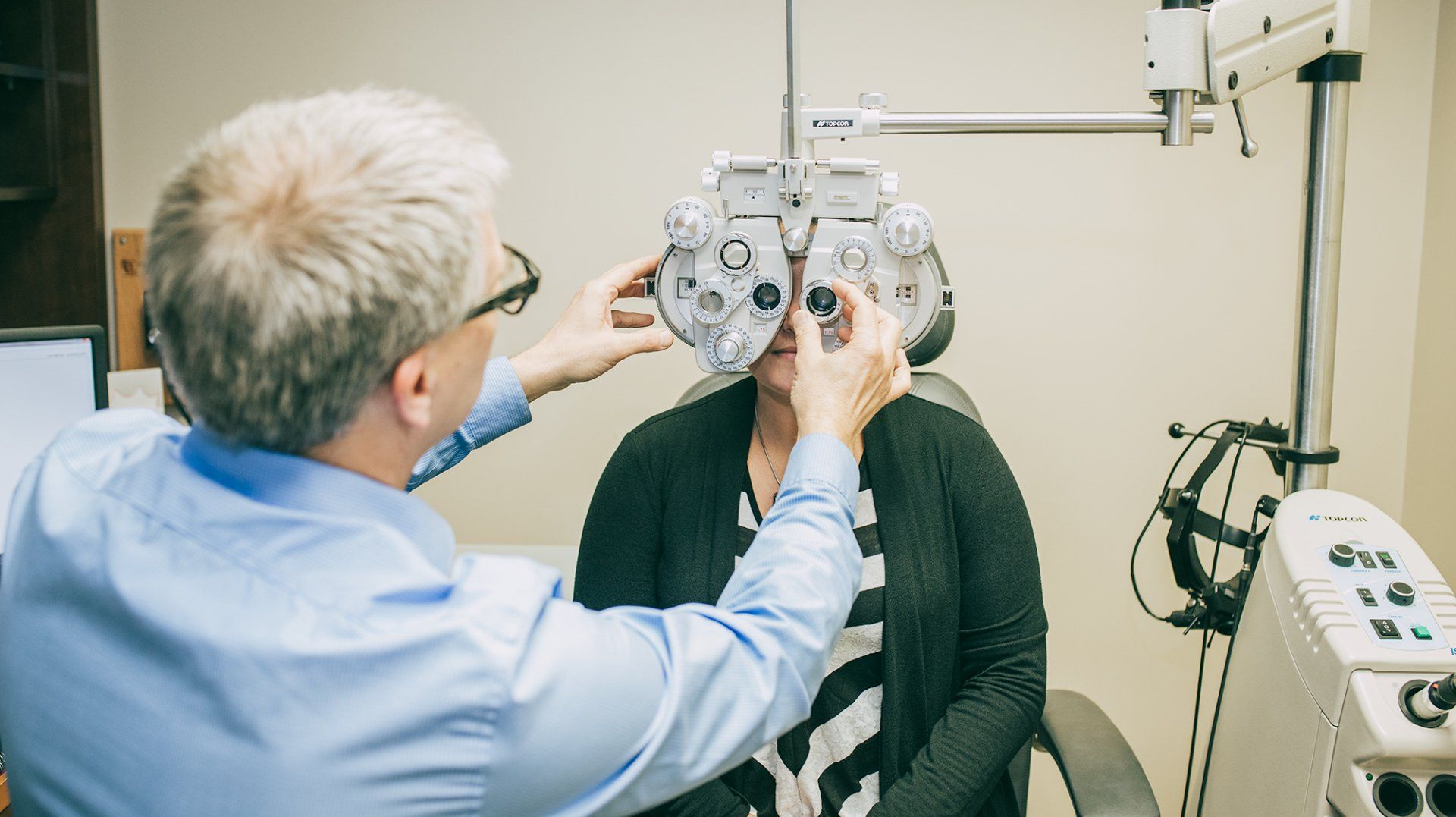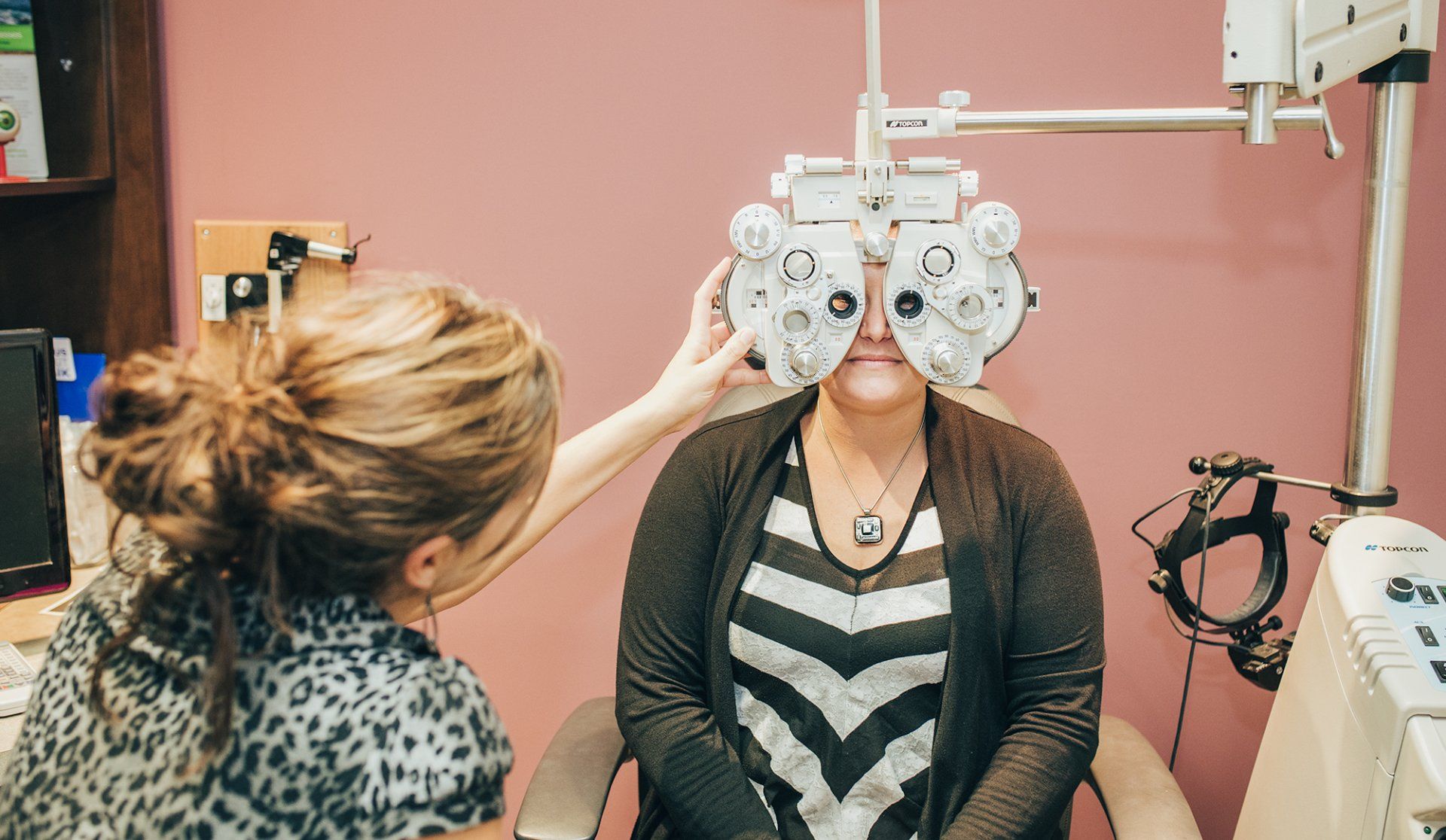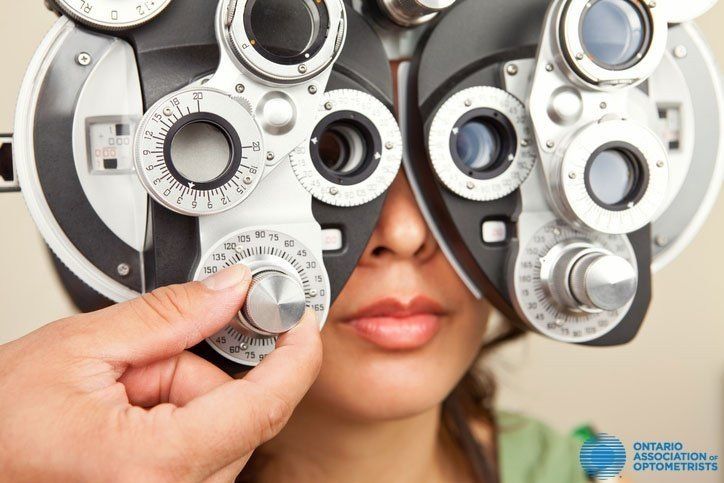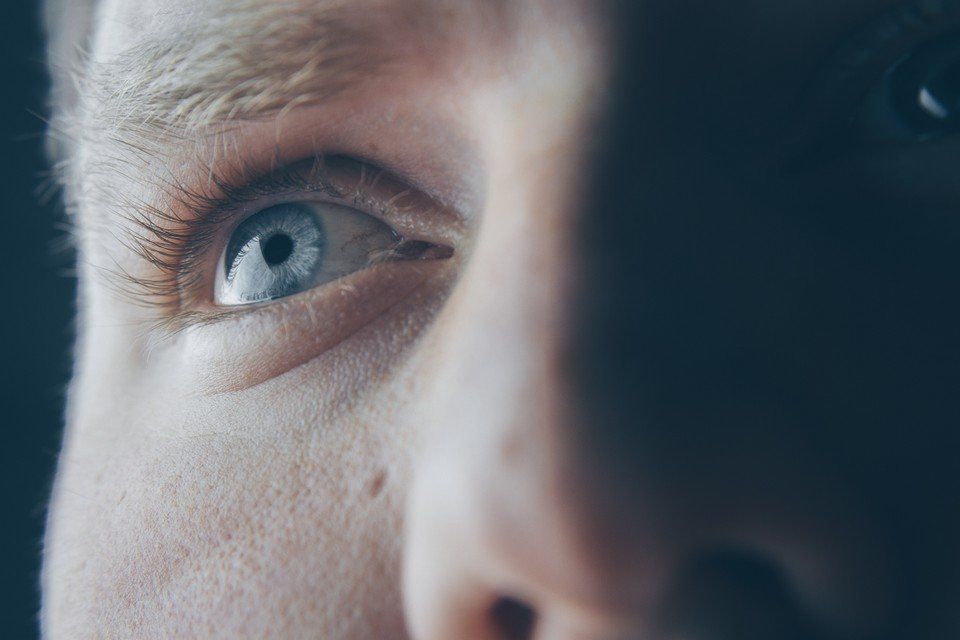Once your pre-testing is complete, you will be seen by one of our Optometrists to complete your full eye exam. During your exam the doctors will do a series of tests which may include all or most of the following:
Acuity Testing (Visual Acuity Testing):
This is the method in which your optometrist measures your far and close vision. They will have you read out letters/numbers/pictures on an eye chart across the room as well as on a card held close.
Colour Vision Testing: This is completed either by naming numbers in a book or arranging coloured caps. This is typically completed as part of vision testing for children in order to rule out a colour vision deficiency. This test may also be useful to alert the eye doctor to other potential eye health problems as well.
Contact Lens Assessment:
If you are a contact lens wearer, the doctor will examine your contact lenses on your eyes to check both your vision and the fitting of your lenses. Our eyecare professional will assess your quality of vision and correct fit of your current contact lenses prior to refilling your contact lens supply, or updating to your new prescription, and will recommend a new lens material, or lens design if appropriate.
Cover Testing:
This test is completed so the eye doctor can assess how your eyes work together. The doctor will ask you to look at a target and cover your eyes alternately. This test can help determine if strabismus (an eye turn) is present or indicate an abnormality in how your eyes work together which could be causing eye strain.
Ocular Motility Testing:
This test involves moving your eyes to follow a moving target. This enables the doctor to ensure both eyes can move smoothly into all positions of gaze. Difficulty with eye movements can cause eye strain and difficulty reading.
Ophthalmoscopy:
For patients who are too young to use the slit lamp or who have limited mobility, the ophthalmoscope can be used to look inside the eyes. It is a handheld device with a bright light which comes close to the eye to examine the insides of the eyes.
Pupil Dilation:
This is typically done for new patients, patients with particular eye diseases, and periodically for routine examination of the peripheral retina. Eye drops are instilled into the eyes which open or dilate the pupils. The drops take about 15-30 minutes to take effect. Following pupil dilation, the doctor can see into the very far corners of the eyes to give you the most thorough evaluation of the insides of your eyes. Following your examination it is common to experience somewhat blurred vision and light sensitivity for a short period, and you may prefer to arrange for a driver.
Refraction:
This test is completed by the doctor to determine one’s prescription for glasses. The doctor will put an instrument, called a phoropter, in front of your eyes and have you look through specific lenses. By having you respond to which lenses make your vision clearest, the doctor will adjust and fine-tune the lens power to determine your final prescription for glasses.
Retinoscopy:
This is also a method of checking the prescription required for glasses. Typically this is completed for a child who is too young to identify letters/numbers or for an individual who is non-verbal. This involves dimming the lights and focusing on a distance target. The eye doctor will shine a light in your eye and adjust lenses in front of your eyes. The doctor will assess by means of the light reflecting back from your eye, the prescription that is required.
Slit Lamp Examination:
The slit lamp is a large microscope combined with a high intensity light source enabling the doctor to look at the fine details of your eyes, including the eyelids, cornea, conjunctiva, iris, and lens. The doctor also typically uses a hand held lens to look into the back of the eye to examine the vitreous (which is the clear gel inside the eye) and retina.
Stereoacuity:
This test gives a measure of one’s fine depth perception. The doctor will have you put on a pair of “3D” glasses and ask you to identify objects which appear closer to you. Poor depth perception can impact your mobility, driving and fine motor skills.




